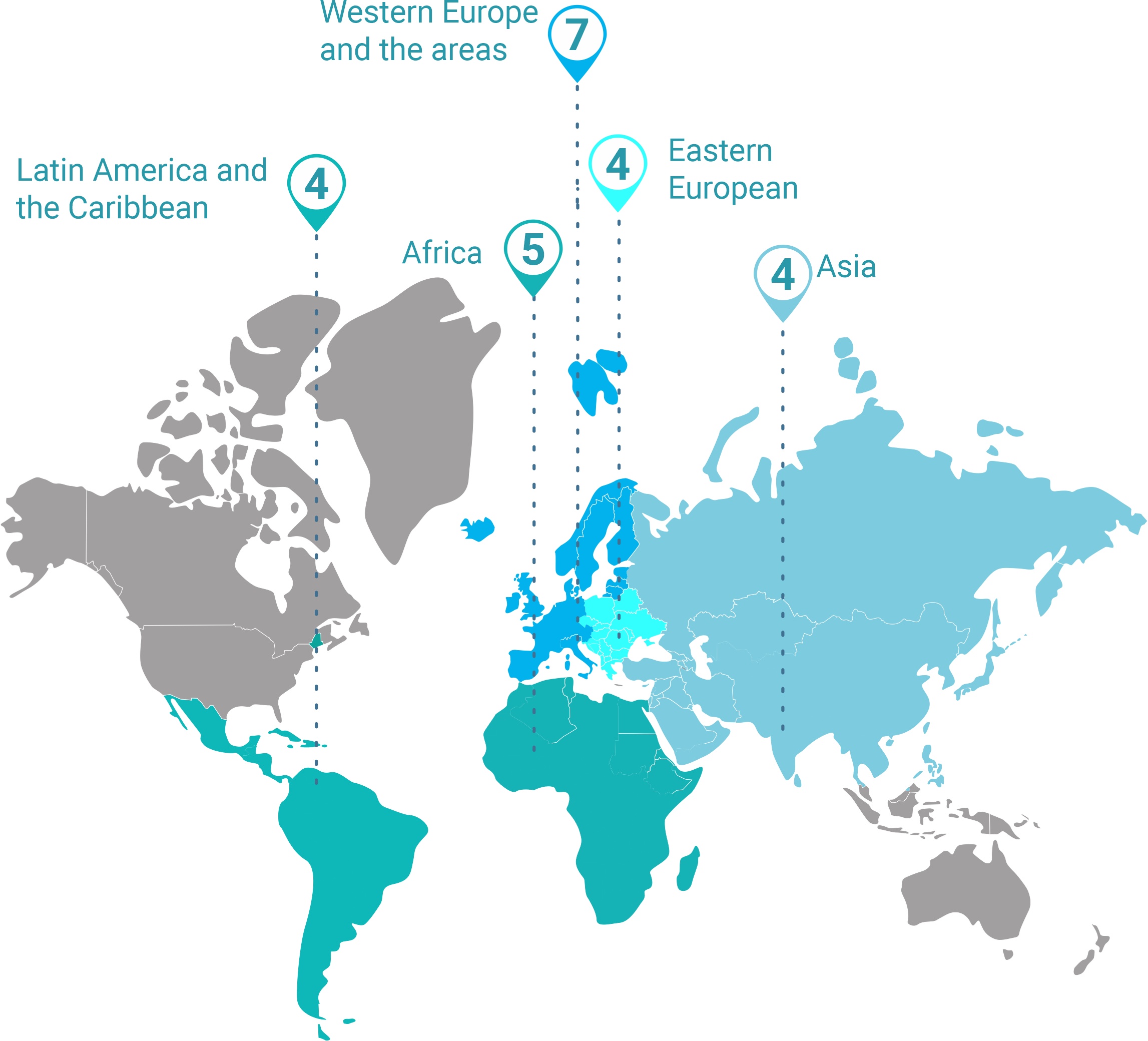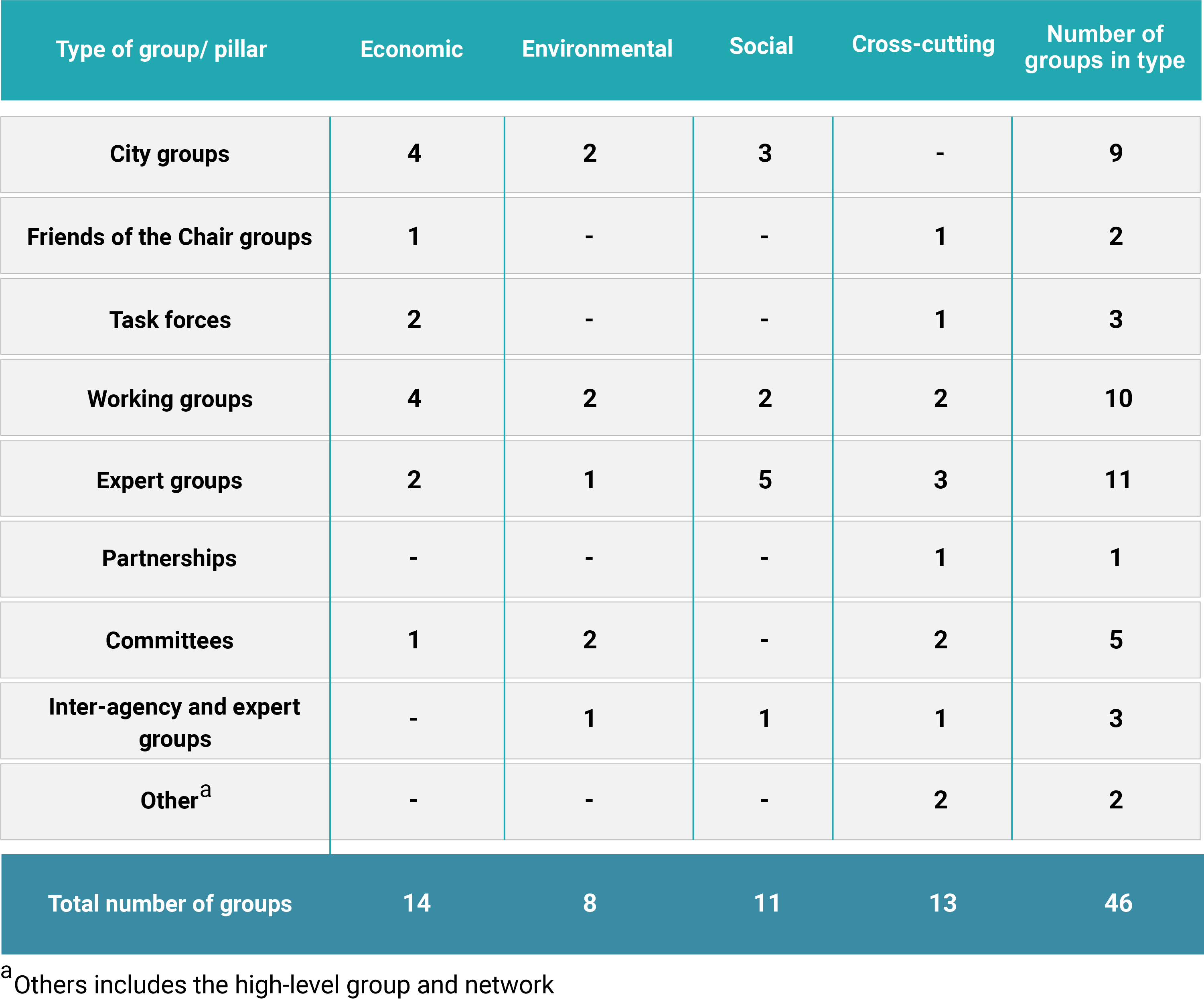17.3 United Nations Statistical Commission (UNSC)#
The United Nations Statistical Commission (UNSC), established in 1946 and convened for the first time in 1947, is the highest body in the international statistical system. It brings together the chief statisticians of member states from around the world. It is the highest decision-making body for international statistical activities, especially the setting of statistical standards, the development of concepts and methods and their implementation at the national and international level. In this sense, the UNSC is referred to as the apex entity of official statistics globally.
17.3.1 Mandate of the UNSC#
The UNSC is one of eight functional commissions of the ECOSOC. It assists the ECOSOC in:
promoting the development of national statistics and the improvement of their comparability;
the coordination of the statistical work of specialized agencies;
the development of the central statistical services of the Secretariat;
advising the organs of the United Nations on general questions relating to the collection, analysis and dissemination of statistical information; and
promoting the improvement of statistics and statistical methods generally.
17.3.2 Members of the UNSC#
The UNSC consists of 24 member countries of the United Nations elected by the ECOSOC based on equitable geographical distribution, as follows:

The term of office of an elected member is four years. Information on the current membership (🔗) is provided.
17.3.3 Methods of work of the UNSC#
Annual session of the UNSC
The UNSC convenes formally in a four-day annual session. These four days, it considers issues of special concern in international statistical development, methodology, coordination and integration of international statistical programmes, and support of technical cooperation activities in statistics and organizational matters. With the adoption of Agenda 2030 and the SDGs monitoring and evaluation indicator framework, the UNSC in its annual sessions has provided broad and targeted guidance to support national statistical offices in capacity strengthening and addresses new and emerging data and statistics challenges.
See here for a summary of agenda items (🔗) for 2010-2019 and an archive of past sessions (🔗).
In addition to the formal sessions, a programme of side-events that typically starts during the week before the formal sessions features informal discussions, informative briefings, informal consultations and networking of participants and organizations, and meetings of organizations, working groups and bureaus of intergovernmental statistical bodies. In recent years, the programme of events has included a Friday Seminar on Emerging Issues and a Monday High-Level Forum on Official Statistics; the outcomes of which are reported to the UNSC at its formal session.
The sessions are attended by its 24 members with all other member States of the United Nations invited to attend as observers. The five United Nations regional commissions, other United Nations entities (funds, programmes, specialized agencies and other bodies, entities and related organizations—refer to Figure 20) may also attend as observers.
Organizations that do not belong to the United Nations that belong to the international statistical system may also attend the annual sessions as observers. In addition, the UNSC generally welcomes the participation of non-members and the representatives of civil society organizations (CSOs) in various aspects of its work, as observers.
The Commission submits a report on each session to the ECOSOC. The report contains an account of the Commission’s proceedings and the action taken/decisions on each agenda item. An archive of reports of past sessions can be found here. The report of the 51st session can be found here.
Officers and secretariat of the UNSC
The officers of the UNSC also referred to as the Bureau, are the Chairman, 3 Vice-chairmen and the Rapporteur. Elections are held at the beginning of a session.
The sessions of the UNSC are substantively serviced by the United Nations Statistics Division (UNSD).
Groups of the UNSC
Over the years, numerous groups have been established under the auspices of the UNSC to examine topics of methodological interest, develop normative documents, and coordinate statistical work. Typically, the outputs of the groups are submitted to the Commission for discussion and eventually for endorsement. These arrangements have allowed the Commission to fulfil the high expectations associated with being the highest body in the international statistical system. Collaborative work among national statistical offices and statistical units of international, regional and supranational organizations has resulted in a myriad of accomplishments in established and emerging areas of statistics.
In 2022, a total of 46 groups operate under the UNSC. The arrangements and mandates of these various groups reflect a spirit of inclusiveness and collective ownership. In order to address the wealth and breadth of official statistics, ten distinct types of groups can be identified: city groups, friends of the Chair groups, task forces, working groups, expert groups, committees, inter-agency and expert groups, partnerships, high-level groups and networks.
Table 1 provides a breakdown of the types of groups by sustainable development pillar[1]. More information (🔗) on these groups is available.
Table 1: Number of active groups under the Statistical Commission, by type of group and pilar (October 2019)

Source: Adapted from https://unstats.un.org/unsd/StatCom/51st-session/documents/2020-27-WorkingMethods-E.pdf
